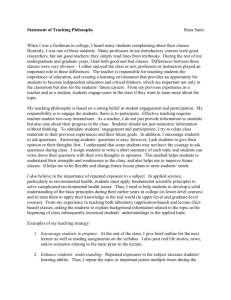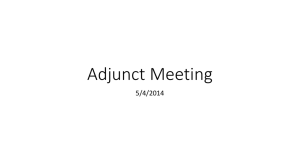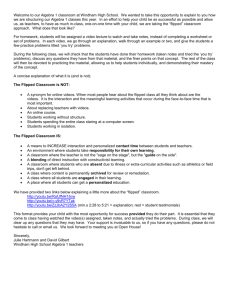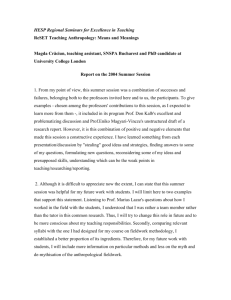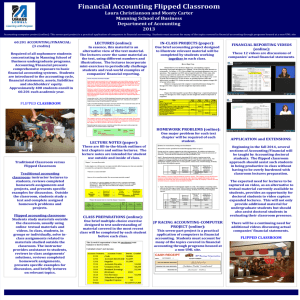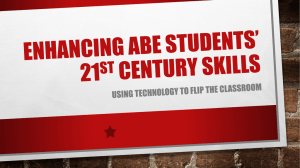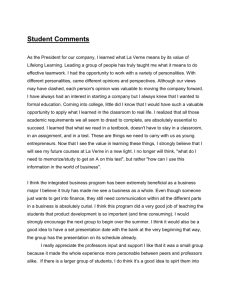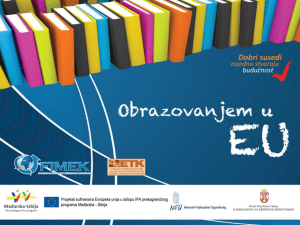Ohio University Faculty Generated Flipped Classroom Benefits
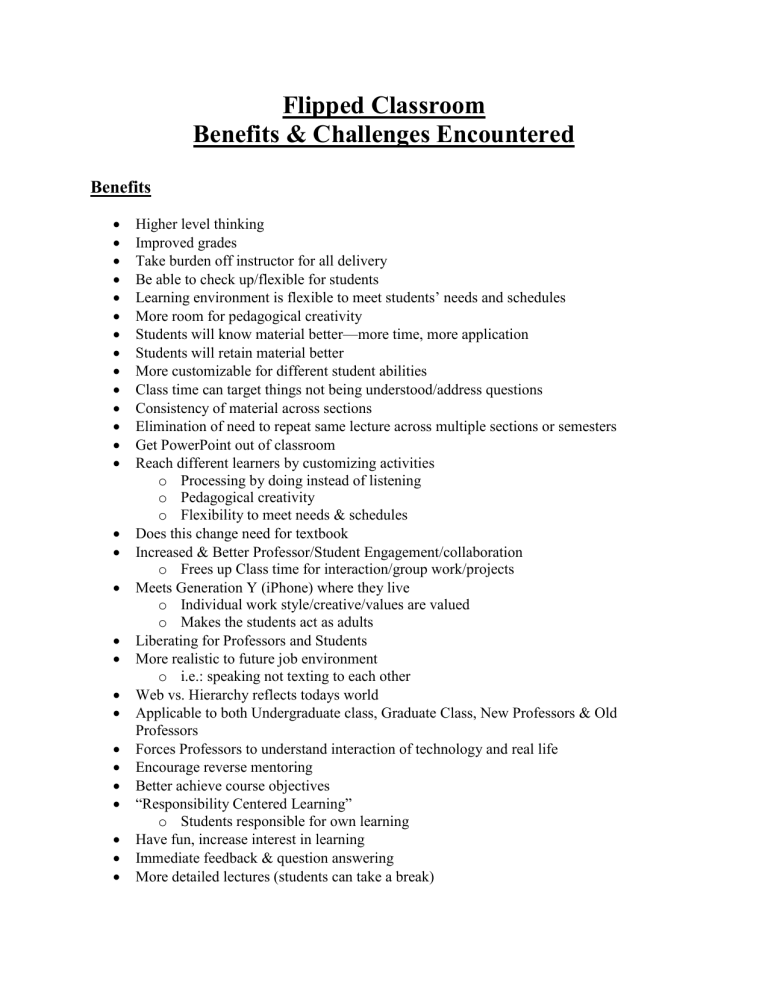
Flipped Classroom
Benefits & Challenges Encountered
Benefits
Higher level thinking
Improved grades
Take burden off instructor for all delivery
Be able to check up/flexible for students
Learning environment is flexible to meet students’ needs and schedules
More room for pedagogical creativity
Students will know material better—more time, more application
Students will retain material better
More customizable for different student abilities
Class time can target things not being understood/address questions
Consistency of material across sections
Elimination of need to repeat same lecture across multiple sections or semesters
Get PowerPoint out of classroom
Reach different learners by customizing activities o Processing by doing instead of listening o Pedagogical creativity o Flexibility to meet needs & schedules
Does this change need for textbook
Increased & Better Professor/Student Engagement/collaboration o Frees up Class time for interaction/group work/projects
Meets Generation Y (iPhone) where they live o Individual work style/creative/values are valued o Makes the students act as adults
Liberating for Professors and Students
More realistic to future job environment o i.e.: speaking not texting to each other
Web vs. Hierarchy reflects todays world
Applicable to both Undergraduate class, Graduate Class, New Professors & Old
Professors
Forces Professors to understand interaction of technology and real life
Encourage reverse mentoring
Better achieve course objectives
“Responsibility Centered Learning” o Students responsible for own learning
Have fun, increase interest in learning
Immediate feedback & question answering
More detailed lectures (students can take a break)
Enhanced connection beyond an online program
Varies dynamics of classroom
Broader availability of MORE voices
Richer classroom experience
Technology gives opportunity to integrate multi-media in classroom
Faculty/Student organization skills
More time for practicing skills
Improved student’s outcomes
More fun in active learning
More materials can be covered
Flexible for various situations (emergency situations for example)
Ability to review content before final
Facilitates the non-traditional student eg. Online students
Facilitates organization up front
Makes the schedule flexible and is platform independent (eg. Laptop, mobile device)
Once done, it’s there
Use class time for meaningful activities
Use class time to help them with their homework, quiz—use as a discussion tool (esp for accounting)
Help students with writing either getting feedback from professor or peers (peer grading)
Once content created, save time in long run
just tweaking afterwards
Possible for students to “reaccess” info focus on what they don’t comprehend & use time more efficiently by focus on those
More efficient and effective way of promoting learning
Doing/trying something new & receiving support from colleagues
More hands-on time
Gives a valid assessment
Greater immediacy in classroom
Appeals to younger students
Levels playing field for learning disabled students
Challenges
Accountability o Evaluation o Enforcement/Incentive to watch videos o Coming to class/attendance
Dealing with a range of students
Increased interaction—how do you craft in class activities?
More work—less flexibility—as it is very structured
Not knowing enough to know the challenges
Time
Convincing administration, colleagues and students that flipping is valid
Insuring students embrace their roles
Production values and learning how do this “right”
Can you mix flipped and non-flipped
“Excuse” to grow section size
Does this change need for textbook
Infrastructure challenge o Classroom not designed for ease of group work o Class size
Risky o Evaluations o Time management o Departmental chair support o Tenure & promotions (is it valued enough to invest in it?)
Flipped is more than a video o Overall methodology o Lack of access (students/faculty) o Operationalizing activities
Class Management o Video o Classroom o Activities
Overcoming Poor Flipped Experiences
ADA/Transcripts
Accreditation
Technology o Access o Maintenance of materials o Flexibility o Effectively o Integration of different technologies o Choosing the right tool/techniques o Back-ups o Training o Compatibility—new Bb, different computers, mac vs pc
Loss of spontaneity in lectures
Consistency
Resources ($)
Responsibility on the learner
What Content is fair game for exams?
How to engage distant classroom
Basic scientist & clinician in classroom at same time for application
Answering questions
Managing time with no constraints: student pre work, faculty post work
Team work required
Need large tool box to keep students engaged
Becoming skilled at doing this type of teaching & assessment
Assumes the students are at the same level and are ready for the material
Changing student habits
No feedback from students on lecture content/delivery at time of interaction
Course reengineering
It can be overkill
Make online material engaging
Creating applications with a clear connection to the online materials as well as providing for meaningful applications of the materials
Need to repeat for students who did not “prepare”?
Cost
Applicable across the board
Is it better or as good as
Topic choice
Availability of equipment for students to use in class. Not all students have laptops, etc.
Finding collections of online videos—so not recreating the wheel
Copyright issues

